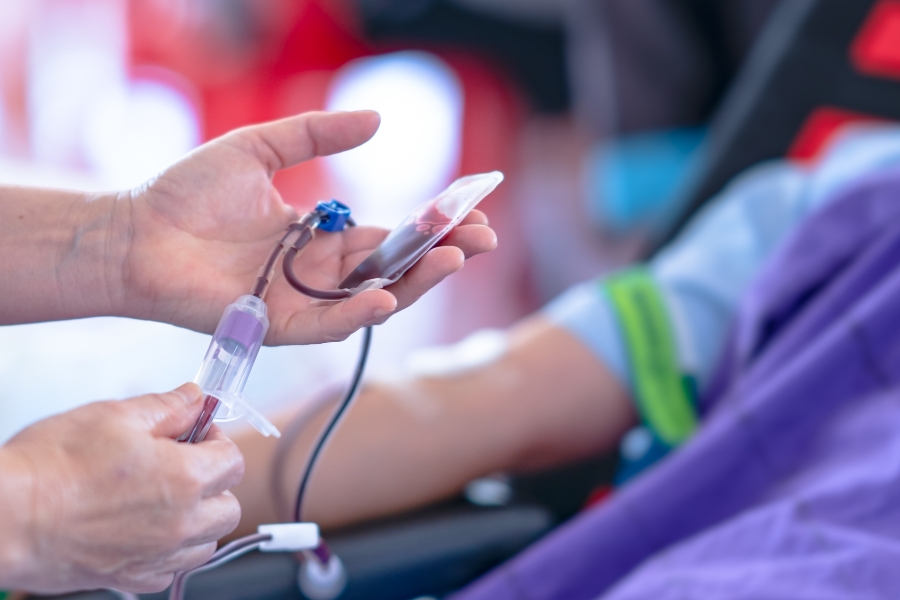Medical News Today Article Written by Paul Ian Cross, PhD on August 22, 2024 — Fact checked by Kevin Cyr, MD
New research published in Nature Medicine suggests that the proteome could be a more accurate indicator of a person’s biological age.
The proteome refers to the entire collection of proteins produced by an organism.
The aim of the research was to determine whether scientists could create a “proteomic aging clock” that would help predict the risk of common age-related diseases.
By using proteomics data, it is possible to more accurately assess aging by comparing an individual’s biological function to what is expected for their chronological age.
While most biological aging clocks rely on DNA methylation, analyzing protein levels could offer a more direct understanding of the mechanisms behind aging, especially as proteins are the main focus of drug development.
However, previous proteomic aging clocks have not been independently validated across populations with varied genetic and geographic backgrounds.
In addition to this, none of the prior aging clocks have been developed using large, diverse population samples that allow for extensive testing across a broad range of age-related diseases, multimorbidity and mortality.
Multimorbidity, defined as the presence of two or more concurrent conditions in a person, is an escalating global issue that significantly impacts individuals, caregivers and society as a whole.
Developing a blood test based on proteomics data
Researchers analyzed a large sample of data from 45,441 participants aged 40-70 from the UK Biobank.
They validated this model in two additional biobanks: 3,977 participants aged 30-80 from the China Kadoorie Biobank and 1,990 participants aged 20-80 from the FinnGen biobank in Finland.
They identified 204 proteins that accurately predict chronological age.
They also pinpointed a set of 20 aging-related proteins that retained 91% of the age prediction accuracy from the larger model.
They found that their assessment of proteomic aging could be linked to the onset of 18 major chronic diseases, including heart, liver, kidney, and lung diseases, diabetes, neurodegenerative conditions like Alzheimer’s, cancer, as well as multimorbidity and all-cause mortality risk.
In addition, proteomic aging correlated with various age-related biological, physical and cognitive measures such as telomere length, frailty index and performance on cognitive tests.
Lead author of the study, Austin Argentieri, PhD, an HMS research fellow in the Analytic and Translational Genetics Unit at Massachusetts General Hospital and Harvard Medical School, explained the key findings to Medical News Today.
He told us that:
“Using a blood test to analyze nearly 3,000 proteins, we developed a machine learning model in over 45,000 individuals that uses these blood proteins to predict your chronological age. We call this a proteomic age clock, which gives us more nuanced information about how you are functioning biologically compared with what we would expect given your chronological age. We can use this information to then measure how quickly you are aging on a biological level by comparing how old your blood proteins predict you are versus your actual chronological age.”
“In the paper, we call this a proteomic age gap,” Argentieri explained.
“It turns out that this measure of your proteomid age gap is highly predictive of mortality and 18 different chronic diseases that are major killers — including dementia, heart disease, liver and kidney diseases, and various cancers,” he added, noting that “[t]he number of disease that we can predict with this single blood test is unprecedented.”
Can researchers apply this age clock to different populations?
Argentieri explained how they developed their proteomic age models in U.K. participants, yet demonstrated that the model was just as accurate in participants from China and Finland.
As these participants were very different from the U.K. participants in terms of genetics, geography, age ranges and disease profiles, this helped validate the model.
“This kind of validation in independent and diverse participants is crucial to demonstrating that our tools and models work for everyone and not just niche pockets of the global population,” Argentieri explained.
Christopher Norman, a board-certified geriatric nurse practitioner with the National Council on Aging, not involved in this research, told MNT that this study is an “interesting example of how technology and the expanding use of artificial intelligence (AI) can be harnessed to help people better understand their health and possible outcomes of health choices.”
Possible implications for preventive health applications
Argentieri highlighted that proteomic clocks hold promise as biomarkers to assess the effectiveness of preventive interventions aimed at aging and multimorbidity.
For example, in the near future it may be possible to use a single test to help evaluate the risk of significant cardiovascular, liver, kidney, and neurologic diseases. At this time though, the tool is still under development and has not yet been approved for healthcare use.
The researchers aim to develop proteomic aging tools that benefit everyone by being accessible to diverse global populations.
“We envision that after a baseline test that tells you about your future health trajectory, you can work with your physician to make necessary steps to improve your health. And then when you take a new proteomic age test, any improvements or decline in your health will be reflected in new results.”
– Austin Argentieri, PhD
Argentieri added that “the hope is that you can use it as a continuous monitoring over time to check whether steps you’re taking to improve your health are having an overall positive impact across many different biological systems in your body.”
Norman agreed, noting that “if this proteomic age clock becomes widely used, it could help healthcare providers assess someone’s biological age more accurately, which may give a better idea of their overall health and risk for age-related diseases.”
“This could shift the focus from treating diseases after they occur to predicting and preventing them before they start,” Norman said, adding that [t]This information is another tool in the tool belt that healthcare providers can use to help people better understand their health and choices.”

